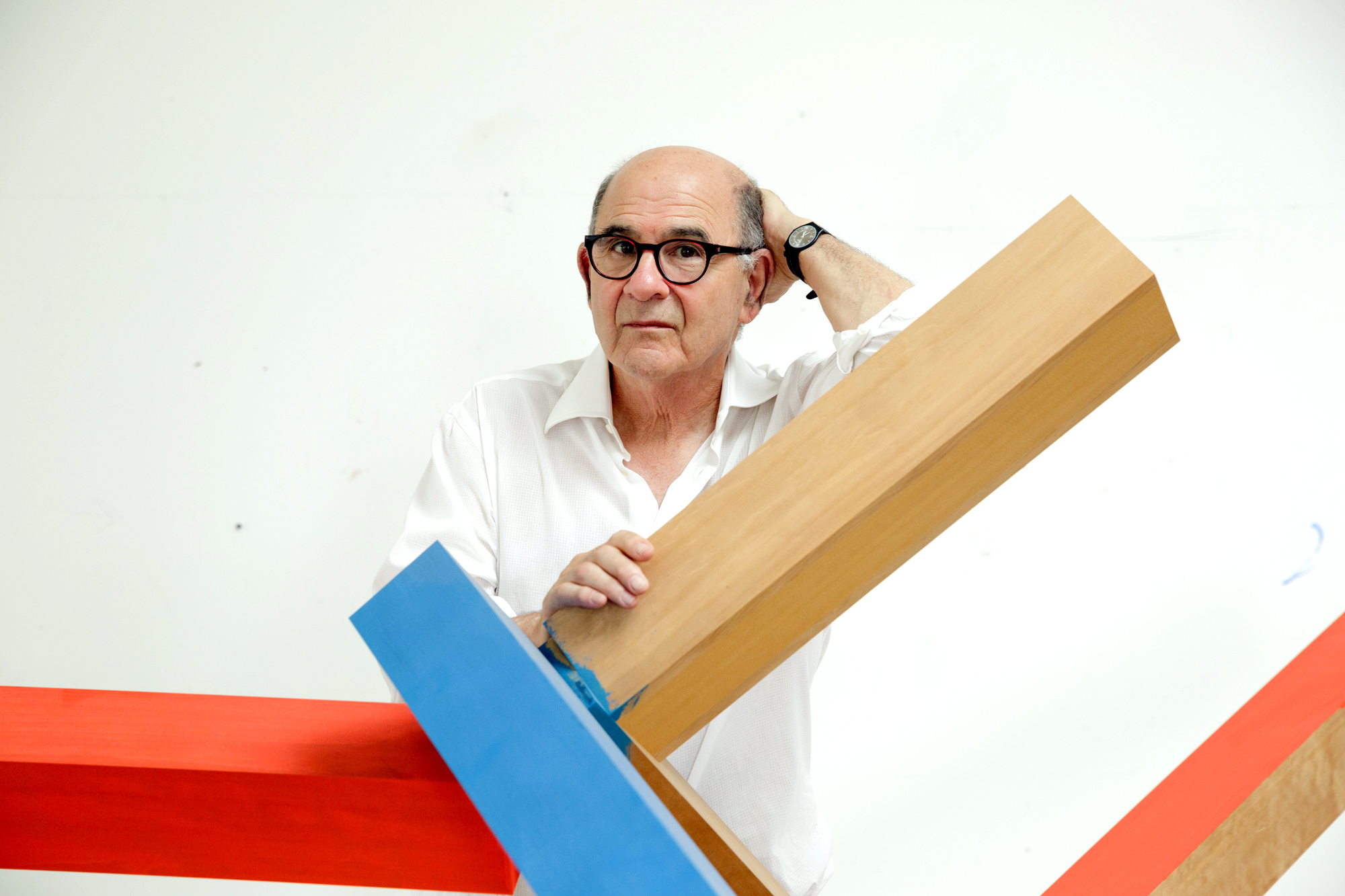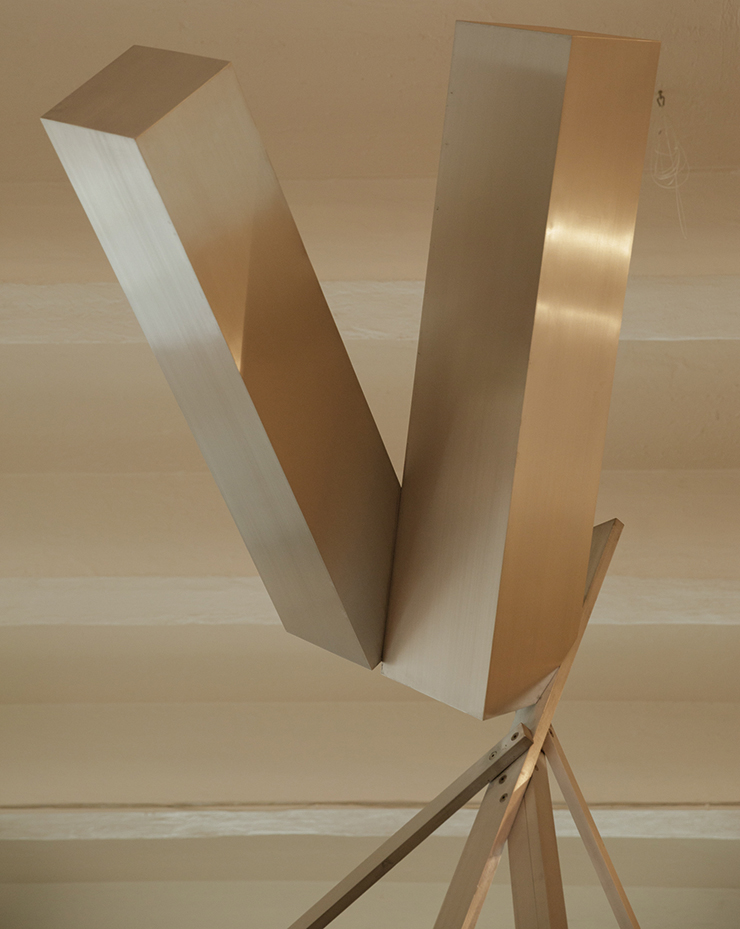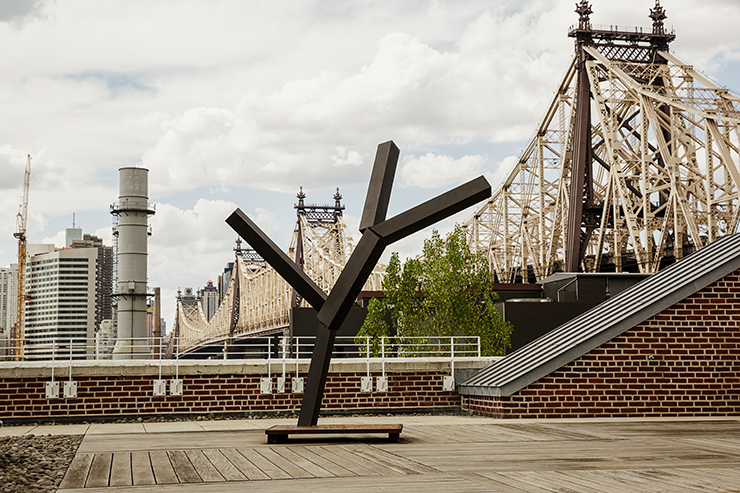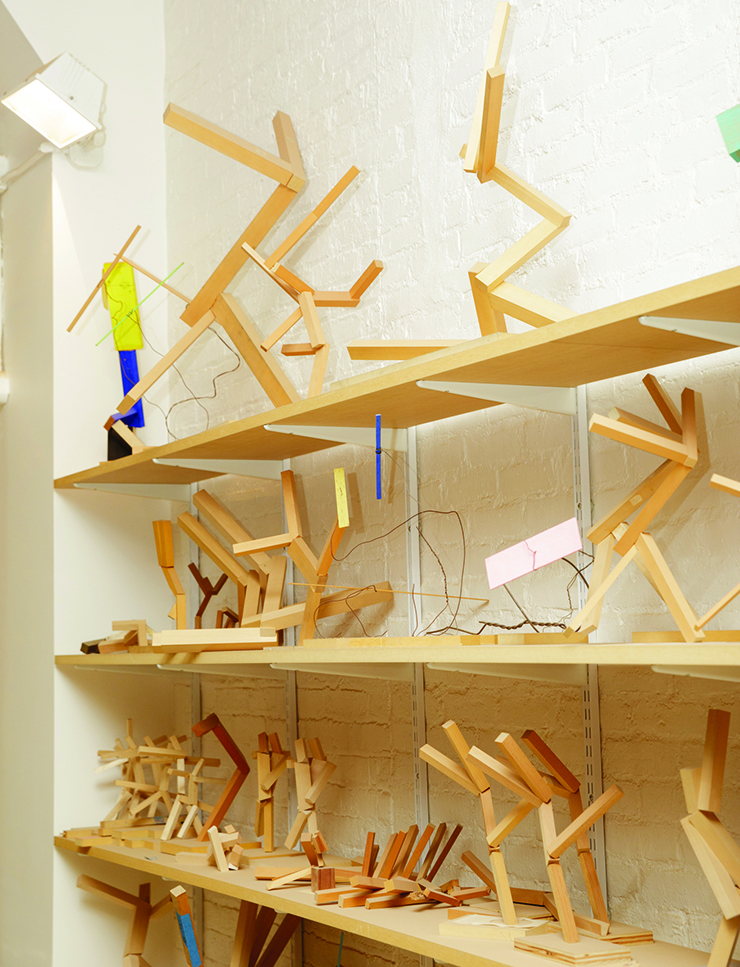
“I’m not interested in strict rules,” says Joel Shapiro with a youthful smirk. “I can’t abide by them.” Yet despite his disdain for overly rigorous ideals, the 74-year-old sculptor and New York native has built one of the consummate public art careers of the 20th century. Since the early ’70s, he’s had more than 40 large-scale public sculptures commissioned for sites across the globe.
His harmonic compositions of cuboids—which oftentimes resemble abstracted figures in motion—always seem to find a perfect balance between intimate sensibility and universal symbolism. Because of this, he’s one of the very few artists who’ve been able to thrive in the vexing and contentious realm of public sculpture.
But the story of Joel Shapiro, a Minimalist who claims there’s “nothing systematic” about his “organic process” (words that would’ve made Donald Judd wince in pain), is much more complicated than the abridged version the general public knows. This is something New York dealer Dominique Lévy hopes to rectify in October with an exhibition of both new and historic Shapiro sculptures at her eponymous Upper East Side gallery. The show will feature the artist’s rarely seen miniature wall reliefs from 1978-80 alongside a brand-new installation of works relating to the artist’s most recent exhibition at the Nasher Sculpture Center in Dallas.

Early in his career, Shapiro was deeply attracted to the milieu of Minimalism and its gang of rigorous practitioners: Carl Andre, Richard Serra and Donald Judd, to name a few. But what immediately differentiated him from the next wave of austere Minimalists was his powerful emotional content—something most followers of the movement actively tried to purge from their work.
The only problem was that Shapiro’s abstract symbols (a chair, a figure) were so powerfully rendered that they eventually overshadowed his important contributions to Minimalism. “He didn’t feel that Minimalism was to the ‘exclusion’ of anything,” says Lévy. “So he’s not a pure Minimalist like, say, Sol LeWitt. What differentiates Shapiro is that there has to be an artistic and emotional part to art making. Joy, color and playfulness haven’t been looked down upon by him.”

It’s impossible not to identify these attributes inside Shapiro’s cavernous Long Island City studio, where lively, multihued sculpture studies blanket a multitude of surfaces. When talking about his modestly sized wall reliefs, Shapiro seems to have a healthy sense of nervousness. “I haven’t really seen these since they were first shown 40 years ago,” he says. “I was apprehensive at first, but looking back at the complete body of work has been a positive experience.”
The small, elegant works are quite a contrast to the artist’s large outdoor commissions, but it’s the scale—not the size—of his objects that has primarily engaged Shapiro over a half century of art making. “There’s a certain frame of mind I have when making the work, and someone has to interface with that based on their experience,” he explains. “Scale is a relative value, and it exists in and between everything.”

It’s the manipulation of scale (as well as other abstractions like color and orientation) in Shapiro’s work that elicits such unique emotional responses, and in the end, a Shapiro sculpture could end up being a larger-than-life running man, a small monochrome knot on the wall, or a room filled with flying shards of color.
But if there’s one thing a Shapiro sculpture will likely never be, it’s formulaic.










 in your life?
in your life?

